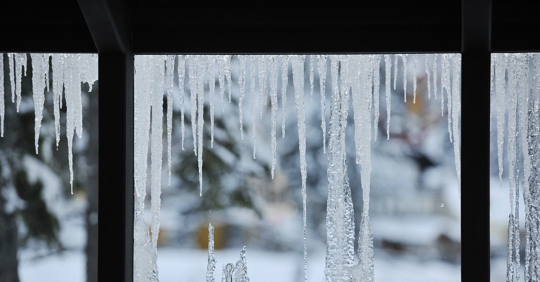5 Ways Bugs Survive the Winter
Welcome to winter.
As the cold settles in, our bug problems disappear, right? Unfortunately, that’s wishful thinking. While our bug problems appear to be gone, come spring, those little pest will rear their ugly heads and attack in full force.
It will be like they never left us in the first place.
Exactly what, then, happens to bugs during the winter and how do they survive eastern Virginia’s frigid winter temperatures, when it is common for the thermometer to dip below freezing?
In truth, there are plenty of ways that bugs survive the cold. Depending on the pest, some spend the winter months in eggs, as larvae, or pupae, while others remain as adults and find ways to adapt and survive. Cockroaches, for instance, are notorious for being able to survive the cold, withstanding temperatures as low as 0 degrees Fahrenheit. For those bugs that aren’t as “frigid” as the cockroach, there are other ways to survive. Here, then, are five of them.
1. They Hide in Your Home
Overwintering pests are very adept at finding their way inside homes, only to reemerge in the spring. Asian lady beetles, stink bugs, and other overwintering pests try to sneak inside via cracks or by hitching a ride on anything that makes its way indoors. You may not even notice they are inside until spring rolls around and you experience a hatching. Still, it is a way that these creatures have adapted to living through the winter.
2. They Head Underground
Much like birds flying south for the winter, some insects seek out warmer climates to wait out the cold. Butterflies and dragonflies head out once the temperatures start to drop, while other bugs take the bear approach. Insects will burrow deep underground or hideout deep under frozen-over water.
3. They Have Immunity to Cold
Unbelievably, some insects just continue with life as usual. Mites and spiders can tough out the cold, seeking shelter in only the most frigid temps. Honeybees also hang around, but stay in their hives forming clusters to keep warm. They control their temperature by vibrating wing muscles. Some insects stay put and live off fat reserves. Mosquitoes, for instance, can go dormant and survive off a blood meal for months.
4. They Find Natural Insulation
Insects can be resourceful when trying to keep warm. Ticks, for instance, don’t vanish in the cold. They tend to stay warm by burrowing underground or by seeking out warm, insulated spots to wait out the cold. They will settle into leaf piles, in stacks of wood, and other areas with built-up vegetation. They can even use snow as insulation. These insects will only surface as the temperatures rise, which can be tricky if winter is being inconsistent.
5. They Take a Cryogenic Approach
While some bugs try to insulate, others simply let themselves freeze. These bugs, like the Emerald Ash borer, will let themselves become completely frozen – but alive. The glycerol in their blood acts like an anti-freeze that keeps them kicking. While they appear dead, they are actually in suspended animation and very much alive.
If you don’t want to play host to a swarm of insects over the winter, be sure to perform regular maintenance on your home. Seal any cracks, fix any broken screens, and be mindful of any opening that insects may be able to slip through.
In addition, check your clothes and any furniture that you bring in for the winter. As always, you can contact us to help fortify your home and protect it from pests all year long.

